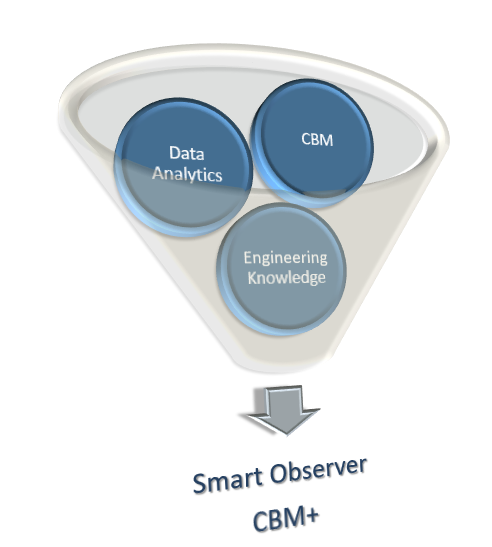Sponsored by Navantia Australia.
To continue reading the rest of this article, please log in.
Create free account to get unlimited news articles and more!
Asset management and Smart Sustainment are key factors to optimise the readiness of the fleet throughout the vessels’ lifecycle. Smart Sustainment employs innovative technologies in Data Analytics (machine learning and data mining) to extract insights from operational data to support decision-making and provide diagnostic and predictive maintenance.
Nowadays, Australia has one of the most advance fleets in the world, but acquisition is not the end, this is just the beginning to position Navy as an agile, resilient and lethal fighting force. Another vital part is ensuring Navy’s readiness to conduct sustained operations at sea. Asset management and Smart Sustainment are key factors to optimise the readiness of the fleet throughout the vessels’ lifecycle.

Smart Sustainment employs innovative technologies in Data Analytics (machine learning and data mining) to extract insights from operational data to support decision-making and provide diagnostic and predictive maintenance.
Current naval maintenance is based heavily on set cost time phased approach to preventive maintenance and does not capitalise on the availability of continuous data fed decision based data analytics. Preventive maintenance is expensive as planned tasks are generally conservative and do not take into account the operational variables in which the equipment and systems are used. Furthermore, early stage or catastrophic failures are not avoided. Therefore, preventive maintenance is costly in terms of budget and readiness of the fleet.
Predictive maintenance is the intelligent health monitoring of equipment to avoid future equipment failure. In contrast to preventive maintenance, which follows a set timeline, predictive maintenance pinpoints the root cause of the failure and schedules maintenance as soon as it is required. Predictive analytics enables informed decision making in the face of uncertainty and risk, through real time data-driven insights and predictions.
The digital revolution is fundamental in an asset management strategy. Data analytics is a promising new field of activity towards the next industrial revolution 4.0, creating Value from Data, evolving from signals to knowledge.
Data driven approaches require appropriate sensors and failures database in order to correlate and extract conclusions to identify and prevent them in the future. However, computing science is not enough to address the problem; it is not a simple data science challenge to be solved by applying machine learning or new IT tools. A deep engineering knowledge about the platform, the interconnected systems and the equipment is required to solve the correlation-informed-by-causation model effectively.
Reliability Centered Maintenance (RCM) analysis determines appropriate maintenance tasks to address each of the identified failure modes and their consequences (FMEA). It governs the probability that an equipment will perform its intended function satisfactorily for a specific interval under certain conditions. Conditioning Base Maintenance (CBM) assesses the health of assets to identify failures in advance. Combining both analyses enables maintenance tasks to be performed in an efficient, reliable and safe manner at a point in time when it is most cost-effective and before asset loses optimal performance.
However, the main reason these analyses tend to fail is due to the large knowledge gap between the developer of the method and the user. If the developer does not understand what and how the systems work, the chance of recognising inappropriate assumptions or reasons why certain behaviour is occurring is significantly reduced.
Therefore, engineering expertise on the particular asset combined with Data Analytics are the two necessary pillars that support the development and implementation of Smart Sustainment strategies, towards a cost-effective and optimal asset management.
The evolution of the digital twin will be able to simulate the physical dynamics and characteristics of its physical twin so that potential problems can be predicted and simulated in a safe environment. Again, collecting and analysing a large volume of data, combined with domain expertise to find laws and knowledge, has become the key to break the barriers between the physical world and the digital world.
Defence preparedness is about having forces that can be deployed and sustained on operations in a timely and effective way. Smart Sustainment is a driver to a more capable, agile and potent Navy that has greater capacity to respond to strategic risk wherever Australia’s defence interests are engaged.
A cross-platform approach in data analytics will accelerate the process towards integrated Smart Sustainment based on lessons learnt, commonalities and synergies. Navantia Australia is uniquely placed to provide Smart Sustainment services to the Royal Australia Navy. As the ship designer of the Hobart class DDGs, Canberra class LHDs, the LHD Landing Craft, and Supply class AORs, Navantia Australia successfully combines design and construction heritage knowledge of the vessels as well as data analytics capabilities to offer a unique suite of products and services in Smart Sustainment.
Furthermore, Navantia Australia is the Original Equipment Manufacturer (OEM) of critical equipment on board, such as the diesel engines and the Integrated Platform Management System (IPMS). The IPMS manages more than 35,000 signals per vessel, data being not only a control system, but also an intelligent sustainment tool and providing valuable real time data over life of type.
Navantia Australia, through Smart Sustainment with access to data gathered over 15 years from 25 naval vessels covering 500 assets, is ready to undertake disruptive innovation trends towards the next industrial revolution 4.0 and develop custom predictive models in support of Royal Australian Navy assets.

 Login
Login







